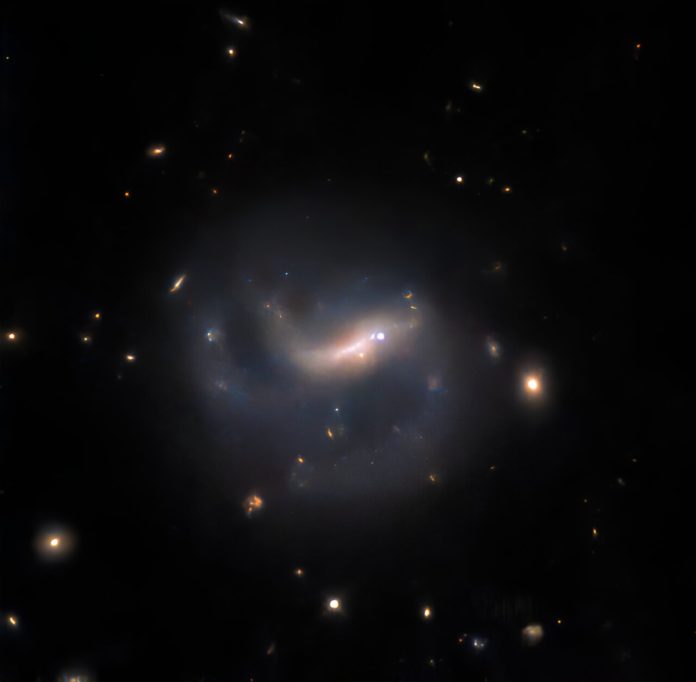
The NASA/ESA Hubble Space Telescope has captured a breathtaking image of the galaxy LEDA 857074, located in the constellation Eridanus.
What makes this image special is the bright spot on the right side of the galaxy’s central bar—this is a supernova named SN 2022ADQZ.
A supernova is a powerful explosion that marks the end of a massive star’s life. When such a star runs out of hydrogen fuel, it begins fusing heavier elements.
These reactions create less energy, which means there’s less outward pressure to counteract the star’s own gravity.
Eventually, the star’s core collapses under its gravity, and the outer layers explode outward in a supernova. What’s left behind could be a dense neutron star or, in some cases, a black hole.
Astronomers first spotted supernova SN 2022ADQZ using an automated survey in late 2022. This discovery led them to take a closer look at its host galaxy, LEDA 857074, with the Hubble Space Telescope in early 2023.
Hubble’s advanced technology allows it to see supernovae that are billions of light-years away—something ground-based telescopes struggle with. From Earth, a supernova’s light often blends in with the light from its host galaxy, making it hard to study.
However, Hubble’s sharp vision can separate the light from the supernova and the galaxy, providing clear and direct measurements of the explosion.
Every year, astronomers detect thousands of supernovae, but finding one in a specific galaxy is rare because there are millions of galaxies cataloged. The discovery of SN 2022ADQZ has now put LEDA 857074 on the map, giving it a place among other celestial wonders with its very own Hubble image.
This remarkable image not only highlights the beauty of LEDA 857074 but also showcases the incredible power of a supernova explosion, offering a glimpse into the life cycle of stars and the vastness of our universe.



